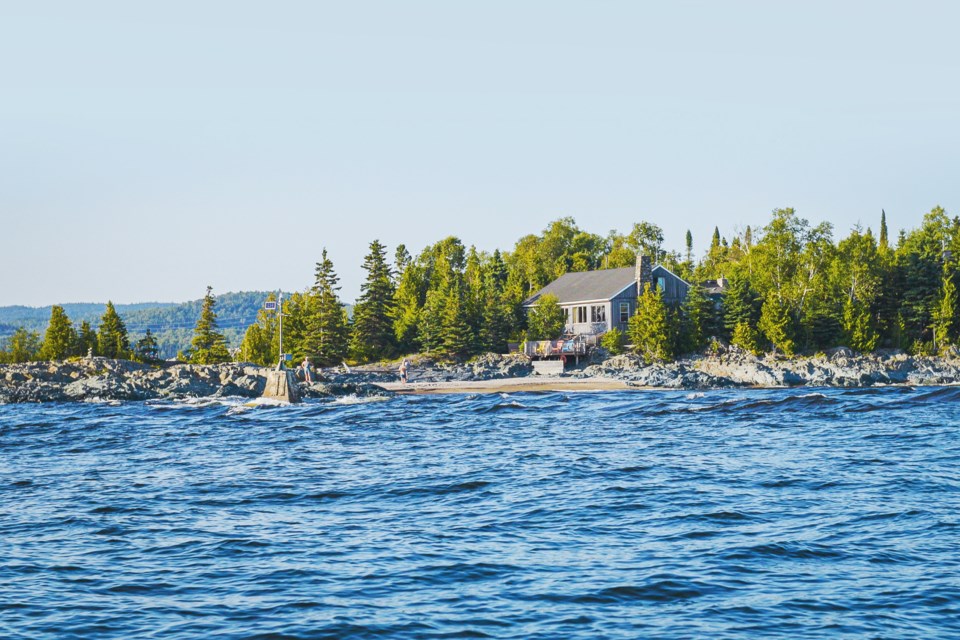The last few years have been a rollercoaster for Northern Ontario’s tourism industry. COVID-19 had an unprecedented impact during the 2020 and 2021 seasons and completely reshaped the regional profile. The impact was not only immediate but devastating as the borders closed and people stopped travelling for both work and pleasure.
While the COVID-19 pandemic has had a negative effect on various businesses in the province, the tourism industry specifically has been extremely hard hit and has felt the devastating impacts. With no warning, the $36 billion industry in Ontario was virtually shut down overnight.
In an instant, there were millions of dollars in cancellations. Those who kept their deposits had that money carry over for the better part of two years. This created incredible pressure on our accommodators to adapt, persevere, and then get back up and running without selling the proverbial farm.
In Northern Ontario, high-yield, remote access, and fly-in fishing lodges and camps fell under significant pressure, many with little to no business in 2020 due to border closures. Following this, 2021 and 2022 each saw a challenging season caused by COVID-19 restrictions.
United States (U.S) tourists are vital for the tourism industry, representing a significant amount of visitation to Northern Ontario. For example, Northwestern Ontario tourism operators cater primarily to United States tourists for up to 95% of their business. Resource based tourism businesses saw a 97% reduction in revenues for 2020 over 2019. Unfortunately, U.S visitation will not return to pre-pandemic levels until COVID-19 and border restrictions are lifted.
Moving Forward Towards a More Stable Future
Now that restrictions have loosened, tourism has begun to return to the region. Vacancy rates in many areas are returning to pre-pandemic levels, but it will likely be another three to five years before a true sense of normalcy comes back.
There are a number of great signs that life is slowly moving towards something resembling pre-2020 ‘normal’ again. Travel, especially intra-provincial travel, is way up and there is a real appetite for festivals and events after two years of cancelled and delayed celebrations.
Many areas are reporting pre-pandemic occupancy rates and consumer spending is relatively high for those who are bringing tourist dollars in new areas. But there is still a lot of unpredictability, both in terms of the future of COVID-19 and what they may look like, and of external factors like inflation, the cost of travel, capacity issues, employee shortages, and even global geo-politics that bring a lot of questions and unknowns into the fold.
High Demand for Accommodations in Northern Ontario
The accommodation sector is making great strides in terms of occupancy and room revenue, giving the industry a sign of hope that demand from the domestic visitor is strong.
The increased demand on rental vacancies in Northern Ontario is not without its challenges, though. As the resource sector picks up steam and creates demand for both short-term and medium-term accommodations that do not necessitate off-site camps or long-term housing, there is added strain on the existing inventory as organizations book entire resorts, campgrounds, and hotels/motels in order to house their workforce. This reduces an already limited supply during peak traveling season. Often the need is sudden, great in number, seasonal, and in areas without a high inventory of available locations.
In addition, several accommodations were forced to close their doors or change the focus of their operations while others are rapidly aging. All of these factors are creating a difficult situation. While demand may return, the current stock of accommodations has flat lined in the north and without investments and succession, a real danger exists that we may soon outpace capacity.
Staycation Tax Credit Helps Businesses and Individuals
In order to help the tourism industry speed their recovery, the Ontario government unveiled the Staycation Tax Credit for 2022. Ontario residents can claim 20% of eligible accommodation expenses for vacations taken in Ontario between Jan. 1 and Dec. 31, 2022, up to a maximum expense of $1,000 per individual or $2,000 per family. The savings totals up to $200 for an individual or $400 for a family.
Accommodations in Northern Ontario that are eligible for the tax credit include hotels, motels, cottages, campgrounds, bed-and-breakfasts, resorts, lodges, and vacation rental properties. Staycations will help the Northern Ontario tourism industry rebound, but there is still a long road ahead to recovery.
Supporting Tourism in Northern Ontario
Destination Northern Ontario focuses their efforts on ensuring that their decision-making processes are based on real world analytical data at the ground level. In order to track the impact COVID-19 had on the region, they undertook impact surveys in partnership with Nature and Outdoor Tourism Ontario (NOTO), shared and supported impact surveys from the Tourism Industry Association of Ontario (TIAO), and have continued to track fixed roof accommodation performance throughout the years.
Their team engages in a number of avenues to gather data on Northern Ontario’s private accommodation sector from occupancy to revenues to length of stay and places of origin. Destination Northern Ontario works with companies to ensure they have the most accurate picture of what's happening in both the rural and the urban areas when it comes to tracking pandemic recovery.
Destination Northern Ontario is conducting a comprehensive overview of the accommodations sector across Northern Ontario, seeking input from community partners and stakeholders both working in tourism and supporting business operators. As part of an important initiative to identify gaps, challenges, and opportunities from a pan-northern regional perspective, the study will provide insight to what support the sector needs in the next two to five years to enhance the quality of accommodation-based products and services, and the challenges tourism accommodators currently face in the region. Overall, the tourism industry in Northern Ontario has had to endure some huge challenges that will take some time to recover from, but the future looks optimistic. Destination Northern Ontario will continue to advocate the importance of tourism as an economic driver and job creator in Northern Ontario.
